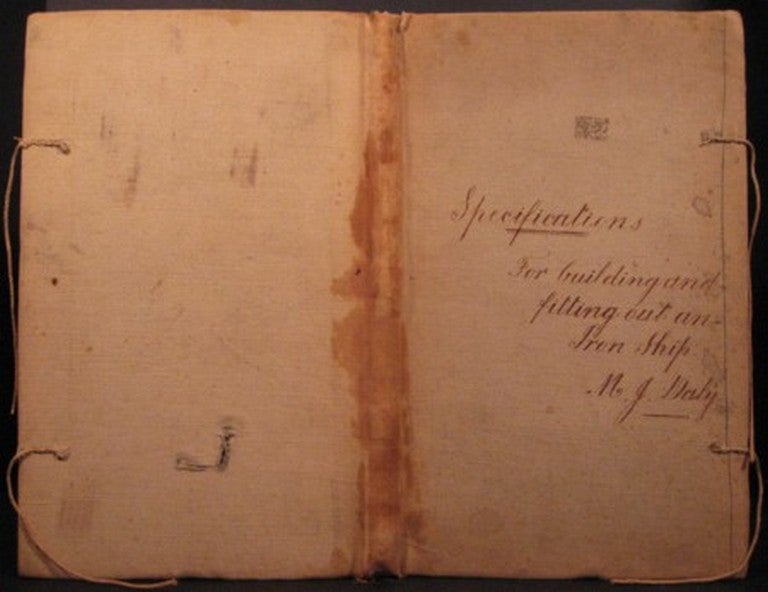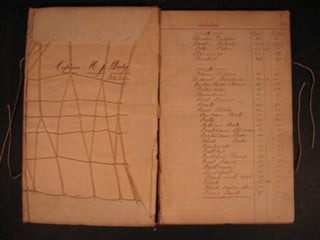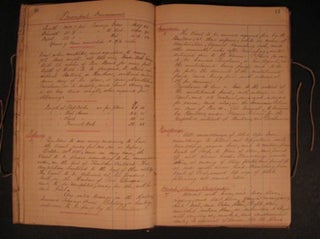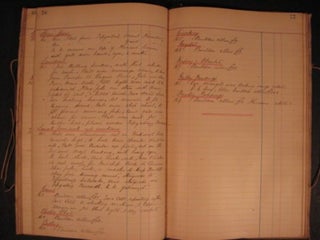SPECIFICATIONS FOR BUILDING AND FITTING OUT AN IRON SHIP.
[Glasgow, Scotland]: Manuscript on paper, 1894.
Folio. 77 pp. written in ink in a fine cursive hand, each section underlined in red, in a ledger notebook of 141 numbered pages, with detailed specifications for all aspects of shipbuilding, from construction and trigging to engines and cabins, etc. In a homemade binding of thick canvas surrounding the original ledger, the canvas stretched across the boards with interlocking twine stitching. Front cover with the title in MS on the canvas, front pastedown and final blank bearing calligraphic inscriptions of the name of the first owner: "Captain M.J. Daly" Covers with obvious use and stains. Item #19729
Manuscript record of the detailed specifications for the construction of an iron ship (length: 247 ft., gross tonnage: 1, 607) to be delivered to Port Glasgow "on or before Oct. 20, 1891".
Daly had considerable experience on the high seas as captain of the 1,727 tonne "W H Lincoln" (built in 1892 and registered to Messrs Thayer and Lincoln). On January 4, 1892, the "W H Lincoln" was on voyage from Puget Sound to Sydney with a cargo of timber and kerosene and a crew of 23 when she was lost due to a fire off Sydney Harbour, Australia. (Source: Australian National Shipwrecks Database).
According to the Sydney Morning Herald (published one day after the fire), 'the "W. H. Lincoln" was one of the best specimens of the modern American wooden-built merchantman, and was launched 10 years ago at Newburyport, Maine, from the yards of J. Currier, Jun. She was overhauled at considerable cost, and yellow-metalled, and up to the disaster of yesterday was in splendid order and in every respect a wholesome well-found ship.'
Captain Daly evidently found other employment: on October 22, 1897, The New York Times reported the appearance of a great storm. Capt. Daly of the steamship "Finance" told reporters that the storm originated in the Caribbean Sea where "he had seen the wind from the Southeast. The "Finance" came up the East Coast along the storm's eastern edge (p. 7, col. 4). The "Finance" left Colon (Panama) on Oct. 14 and arrived at the New York bar on Oct. 21. This was certainly Storm 5 of 1897 (Oct. 10-22) identified by Neumann et al. (1993) as Storm 4 of 1897 (Caribbean Sea, Western Cuba, Florida).
Excellent ,manuscript in its original unsophisticated form.
Price: $1,000.00






